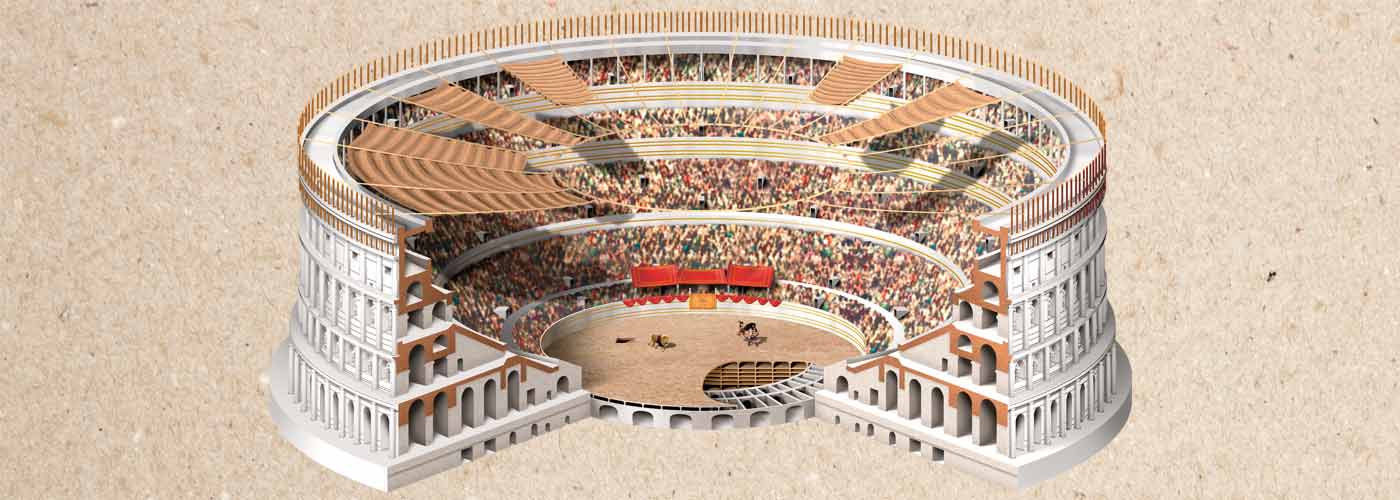Jim McMahon/Mapman®
The year is 80 A.D. An excited crowd of 50,000 people packs into a new amphitheater in ancient Rome. Suddenly, two men wearing armor and carrying swords rise up from beneath the arena. Gladiators! The main event has begun at what will become one of history’s most legendary arenas—the Colosseum.
At the time, amphitheaters were common in the Roman Empire. But the Colosseum stood out. “It is the largest, most important Roman amphitheater ever built,” says historian Steven Tuck.
The Colosseum was like a modern sports stadium. Underneath the arena lay a series of hidden chambers and passageways called the hypogeum, where gladiators and wild animals prepared for battle. This past June, the underground world beneath the Colosseum opened to the public for the first time. Read on for a tour.

